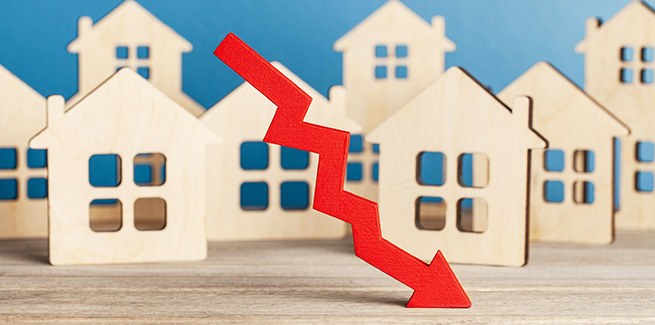CoreLogic’s analysis of Australia’s rental market has revealed that nationally, rental values have declined by 0.3 per cent in the month of June, and 0.5 per cent over the quarter.
The June 2020 Quarterly Rental Review has reported that capital city rental markets have felt the immediate effects of the negative economic shock resulting from the coronavirus pandemic.
Rents fell 0.7 per cent in the June quarter, compared with a 0.2 rise in rents across regional Australia.
According to CoreLogic head of research Australia, Eliza Owen, the decline in rent values over the quarter has come during a period when the rental market was already relatively weak.
Annualised growth in national rent values was just 1.1 per cent in the five years to June 2020, compared with annualised growth in the selected living cost index of 1.4 per cent in the five years to March for employee households.
In other words, Ms Owen explained, rents have grown at a softer rate compared with the rate of growth in general cost of living for most households.
“Prior to the fall in rent values over the June quarter, growth in rents had seen some momentum building, with the national CoreLogic rental index recording consecutive increases between September 2019 and March 2020,” Ms Owen said.
“These signs of rebounding rent values came as investor participation in the market was falling from 2017 and, subsequently, the rate of new supply additions in rental properties had been falling.”
Finance data from the Australian Bureau of Statistics (ABS) indicated that monthly lending values to investors dropped by 1.3 per cent on average between September 2017 and December 2018 amid tighter lending conditions against steady migration. This coincided with the introduction of a temporary limit on interest-only lending.
“However, the COVID-19 environment shifted this trajectory,” Ms Owen said.
“Closed international borders created a significant shock to rental demand, as historically the majority of new migrants to Australia have been renters. Furthermore, job losses in sectors such as hospitality, tourism and the arts, which ABS payroll data estimates has been around 20 per cent, have also impacted demand, because households in these sectors are more likely to rent than in other industries.”
Amid the COVID-19 crisis, six of the capital city dwelling markets have experienced a quarterly decline in rental values.
The Hobart rent market saw the largest value falls in the June quarter at 2.3 per cent. This was the most severe quarterly decline in rent values for the capital city since September 2012, when rents fell 2.4 per cent due to weak economic growth and higher levels of unemployment.
“Furthermore, Hobart is estimated to have a relatively high level of Airbnb accommodation. With anecdotes emerging of Airbnb owners putting this stock to the long-term rental market, the additional supply may have served to further reduce rents,” Ms Owen said.
Sydney and Melbourne saw similar trends, where rents declined considerably in the June quarter.
Sydney rent values fell 1.3 per cent, while Melbourne saw a 1.0 per cent decline in its rent values.
Four of the eight capital cities saw no growth or falls in rent values over the year to June. Perth and Adelaide continued to see growth in rent values over the year, at 2.2 per cent.
Rental yields tumble
Nationally, rental yields fell 41 basis points in the year to June as property values climbed 7.8 per cent over the year compared with a 0.7 per cent increase in rental values. According to Ms Owen, this corresponds with a drastic price rebound between June 2019 and the start of 2020.
The national dwelling rent yield is currently 3.73 per cent, just two basis points off the record low in August 2017.
Units have led the way in the decline in rental yields, where rents nationally fell 1.4 per cent. This compares with a 0.3 per cent decline in unit values over the quarter.
House rent yields have started to stabilise as property values declined faster than rents.
Nationally, house yields were down 52 basis points year-on-year but increased one basis point over the quarter. This occurred against a 0.9 per cent decline in house values, while house rents decreased by 0.7 per cent in the quarter.
“As well as the decline in rental demand, the uncertain economic conditions of COVID-19 has likely also created a drastic decline in housing demand from investors,” Ms Owen said.
“This is apparent in ABS finance data, which showed new lending to investors fell 15.6 per cent in the month of May, as opposed to a 10.2 per cent decline in new lending to owner-occupiers.”
[Related: Construction costs rise, rental market strained]
 ;
;
